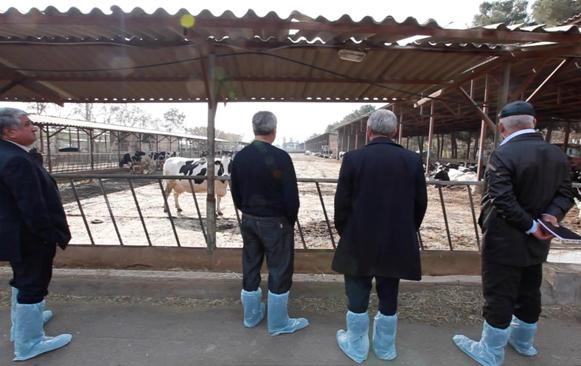Learning about the dairy value chain through Iran-Tajik cooperation

Today, Tajikistan’s dairy farmers and agribusinesses are reaping the benefits of efforts to make the country’s dairy industry more productive and competitive, including knowledge gained during a 2014 study tour to the Islamic Republic of Iran.
The study tour, organized by FAO and carried out under the preparation of Agriculture Commercialization Project (ACP), gave Tajik dairy farmers, processors and other stakeholders an in-depth look at the whole value chain – from raising and feeding cows to processing and marketing their products.
The ACP is jointly supported by the World Bank and the International Finance Corporation, and funded by a USD 22 million grant from the International Development Association. It aims to increase the commercialization of farm and agribusiness products by improving the performance of selected value chains and productive partnerships through increased access to finance and strengthened capacity of project participants.
Making the sector more competitive
Tajikistan’s dairy sector development is hindered by highly fragmented raw milk supply (96 percent of milk is produced by farming households), virtually no milk collection centres and undeveloped modern dairy farming.. As a result, stakeholders across the entire value chain have been keen to increase productivity, improve raw milk quality, and strengthen productive partnerships between farmers and processors to make the national dairy industry more competitive.
The Islamic Republic of Iran, with its population of 77 million, is an important consumer – reported figures put annual per capita milk consumption at roughly 150 litres. Not only has the country managed to fully satisfy its internal demand, it also exports dairy products to the Gulf countries and Central Asia.
With this in mind, and as part of the preparation of the ACP financed by the multi-donor Europe and Central Asia Capacity Development Trust Fund (ECAPDEV), administered by the World Bank, the FAO Investment Centre worked with the FAO country offices in Tajikistan and Iran to organize the study tour. In addition to dairy farmers and processors, representatives from Tajikistan’s Ministries of Agriculture and Finance participated..
Sharing knowledge and good practices
Participants travelled throughout Tehran province in November 2014 to meet with dairy farmers, milk collection centres, processors, veterinary drug and treatment providers, feed production machinery manufacturers and other input suppliers involved in Iran’s dairy sector.
While there, they saw new dairy farming and milk processing techniques to support the development of an inclusive, competitive and sustainable dairy sector in Tajikistan. They learned how to increase productivity through better breeding and feeding practices, and how to get better economic returns and environmental protection by applying the best manure treatment technologies. In the Fashafouyeh milk collection and cooling centre – the biggest in Iran collecting some 450 tonnes of raw milk daily – participants learned how to manage raw milk collection schemes efficiently.
In addition to receiving a wealth of practical knowledge on how modern dairy value chains function, participants discussed the economic impact of strong linkages along the chain, enforced quality standards and advanced marketing strategies in a highly competitive market.
“Value chain development and productive partnerships reside at the core of high-impact and sustainable initiatives focused on improving productivity, competitiveness and commercialization of the Tajik agriculture sector,” said Mr Viorel Gutu, FAO Representative in Tajikistan.
To promote greater knowledge sharing, FAO produced a video of the study tour.
